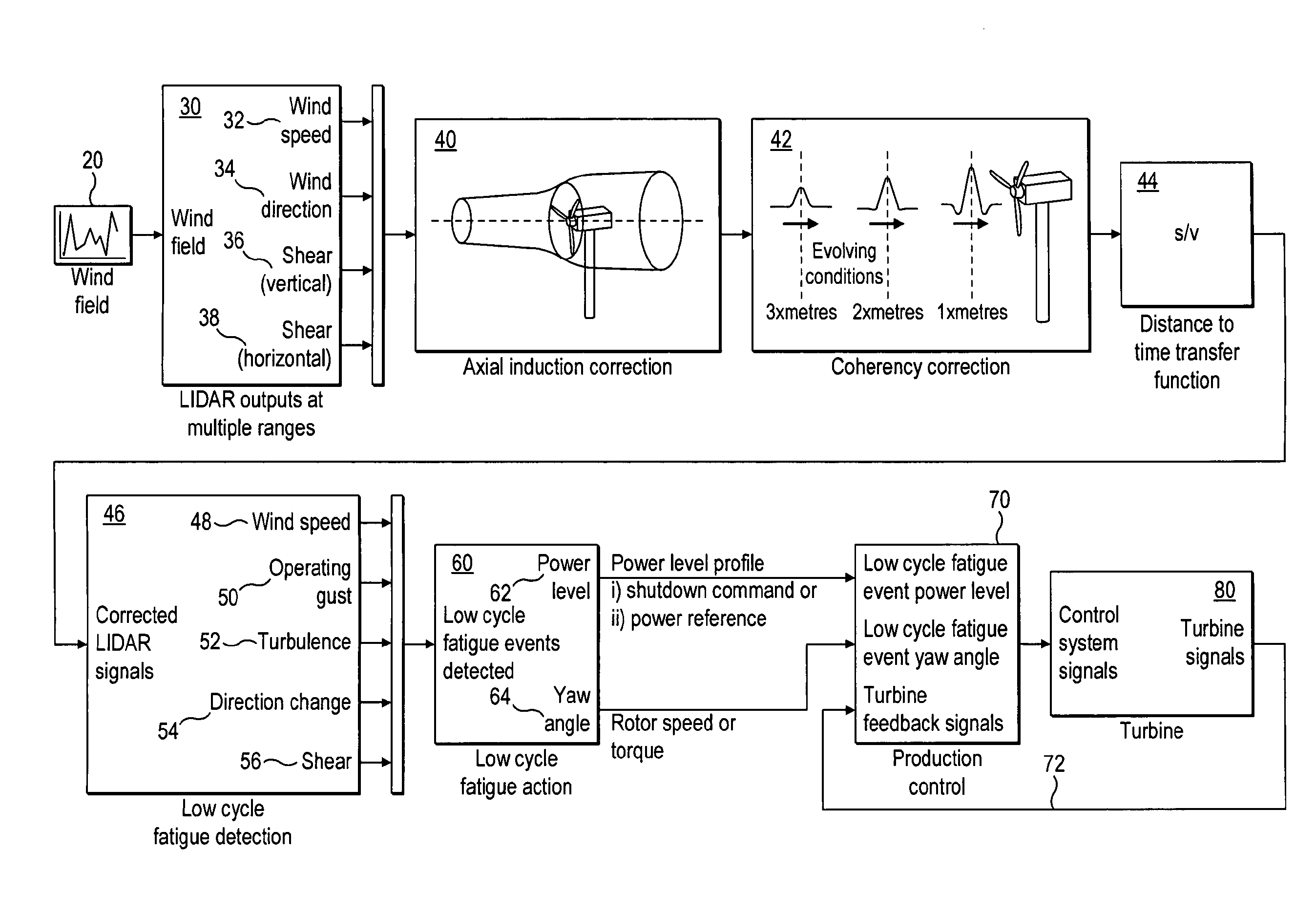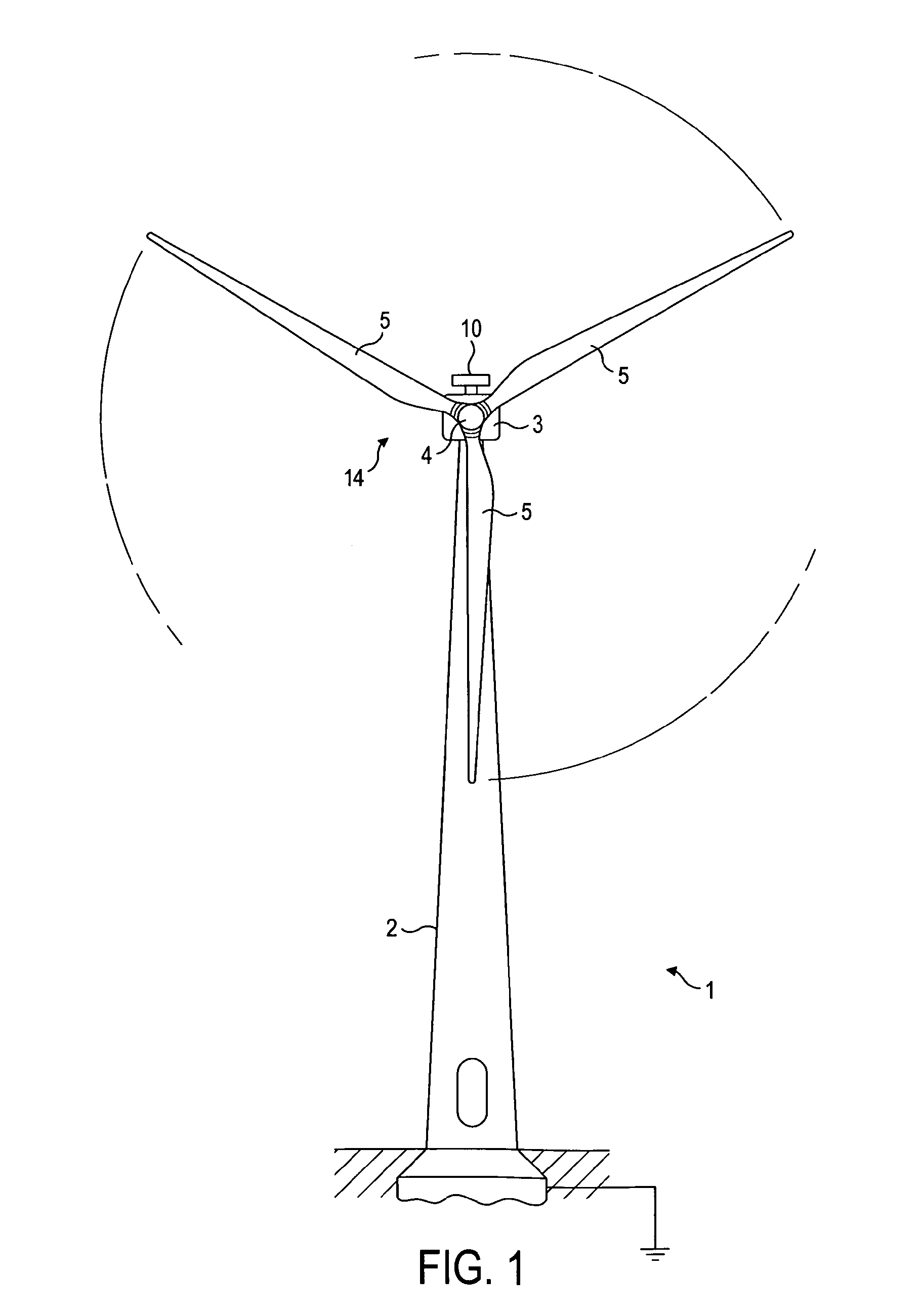Method and apparatus for protecting wind turbines from fatigue damage
a wind turbine and fatigue damage technology, applied in the field of wind turbines, can solve the problems of serious damage, limitation of the design of wind turbine components, and inability to assess the accumulation rate of low cycle fatigue in wind turbine components, so as to avoid unnecessary evasion and detect extreme events more precisely
- Summary
- Abstract
- Description
- Claims
- Application Information
AI Technical Summary
Benefits of technology
Problems solved by technology
Method used
Image
Examples
Embodiment Construction
[0024]FIGS. 1 and 2 illustrate a wind turbine embodying the invention which comprises a tower 2, a nacelle which houses a generator (not show) and a rotor 14 carrying three rotor blades 5. Part of the tower 2 and part of the blades 5 are omitted in FIG. 2 for the sake of clarity. A spinner 4 is mounted on the rotor hub 15 and a cup anemometer 6 and an ultrasonic wind sensor 7 are arranged on the upper surface of the nacelle 3. The invention is not limited to three bladed turbines although most commercial wind turbines use a three bladed rotor.
[0025]A sensing device 10 is also mounted on the wind turbine. The sensing device is forward looking and senses at least wind speed and wind direction at a position upwind of the wind turbine. A preferred device is a Doppler anemometer. This device is preferably a Laser Doppler Anemometer such as a Lidar although other types of Doppler anemometer such as a SODAR or RADAR may be used. In the following description a Lidar is used as the preferred...
PUM
 Login to View More
Login to View More Abstract
Description
Claims
Application Information
 Login to View More
Login to View More - R&D
- Intellectual Property
- Life Sciences
- Materials
- Tech Scout
- Unparalleled Data Quality
- Higher Quality Content
- 60% Fewer Hallucinations
Browse by: Latest US Patents, China's latest patents, Technical Efficacy Thesaurus, Application Domain, Technology Topic, Popular Technical Reports.
© 2025 PatSnap. All rights reserved.Legal|Privacy policy|Modern Slavery Act Transparency Statement|Sitemap|About US| Contact US: help@patsnap.com



